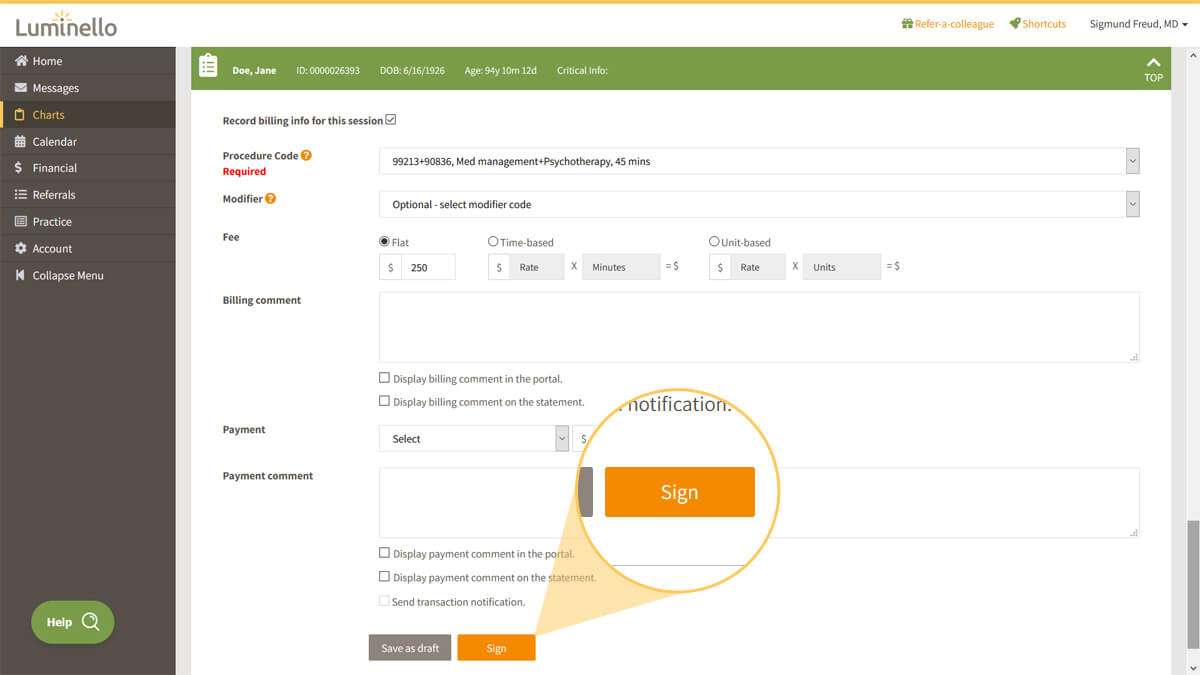Cognitive behavioural therapy (CBT) is a talking therapy that can help you manage your problems by changing the way you think and behave.
It’s most commonly used to treat anxiety and depression, but can be useful for other mental and physical health problems.
How CBT works
CBT is based on the concept that your thoughts, feelings, physical sensations and actions are interconnected, and that negative thoughts and feelings can trap you in a negative cycle.
CBT aims to help you deal with overwhelming problems in a more positive way by breaking them down into smaller parts.
You’re shown how to change these negative patterns to improve the way you feel.
Unlike some other talking treatments, CBT deals with your current problems, rather than focusing on issues from your past.
It looks for practical ways to improve your state of mind on a daily basis.
What happens during CBT sessions
If CBT is recommended, you’ll usually have a session with a therapist once a week or once every 2 weeks.
The course of treatment usually lasts for between 6 and 20 sessions, with each session lasting 30 to 60 minutes.
During the sessions, you’ll work with your therapist to break down your problems into their separate parts, such as your thoughts, physical feelings and actions.
You and your therapist will analyse these areas to work out if they’re unrealistic or unhelpful, and to determine the effect they have on each other and on you.
Your therapist will then be able to help you work out how to change unhelpful thoughts and behaviours.
After working out what you can change, your therapist will ask you to practise these changes in your daily life and you’ll discuss how you got on during the next session.
The eventual aim of therapy is to teach you to apply the skills you have learnt during treatment to your daily life.
This should help you manage your problems and stop them having a negative impact on your life, even after your course of treatment finishes.
Pros and cons of CBT
Cognitive behavioural therapy (CBT) is effective in treating some mental health problems, but it may not be successful or suitable for everyone.
Some of the advantages of CBT include:
- it can be completed in a relatively short period of time compared with other talking therapies
- the highly structured nature of CBT means it can be provided in different formats, including in groups, self-help books and online
- it teaches you useful and practical strategies that can be used in everyday life, even after the treatment has finished
- it focuses on the person’s capacity to change themselves (their thoughts, feelings and behaviours)
- it can be as effective as medicine in treating some mental health problems and may be helpful in cases where medicine alone has not worked
Some of the disadvantages of CBT to consider include:
- you need to commit yourself to the process to get the most from it – a therapist can help and advise you, but they need your co-operation
- attending regular CBT sessions and carrying out any extra work between sessions can take up a lot of your time
- it may not be suitable for people with more complex mental health needs or learning difficulties
- it involves confronting your emotions and anxieties – you may experience initial periods where you’re anxious or emotionally uncomfortable
- it does not address any wider problems in systems or families that may have a significant impact on someone’s health and wellbeing
Some critics also argue that while CBT addresses current problems and focuses on specific issues, it does not address the possible underlying causes of mental health conditions, such as an unhappy childhood.
How to find a CBT therapist
You can get psychological therapies, including CBT, on the NHS.
You can refer yourself directly to an NHS psychological therapies service (IAPT) without a referral from a GP.
Find an NHS psychological therapies service (IAPT)
Or your GP can refer you if you prefer.
If you can afford it, you can choose to pay for your therapy privately. The cost of private therapy sessions varies. It usually costs £60 to £100 per session, but lower rates may be available to those on lower incomes.
There is a register of all accredited therapists in the UK on the British Association for Behavioural and Cognitive Psychotherapies (BABCP) website.
There’s also a directory of chartered psychologists on the British Psychological Society (BPS) website, some of whom specialise in CBT.
Video: psychological therapies for stress, anxiety and depression
Animated video explaining self-referral to psychological therapies services for stress, anxiety or depression.
What is cognitive behaviour therapy?
Cognitive behaviour therapy (CBT) is an effective treatment approach for a range of mental and emotional health issues, including anxiety and depression.
CBT aims to help you identify and challenge unhelpful thoughts and to learn practical self-help strategies. These strategies are designed to bring about immediate positive changes in your quality of life.
CBT can be good for anyone who needs support to challenge unhelpful thoughts that are preventing them from reaching their goals or living the life they want to live.
CBT aims to show you how your thinking affects your mood. It teaches you to think in a less negative way about yourself and your life. It is based on the understanding that thinking negatively is a habit that, like any other habit, can be broken.
When CBT is useful
CBT is used to treat a range of psychological problems including:
Using CBT to treat anxiety
Everyone feels anxious sometimes. Anxiety serves as a means of protection and can increase your performance in stressful situations. For example, the rush of anxiety that often occurs before a job interview or a big race can enhance your performance.
But for some people the feeling of anxiety is more general. This means that you always feel on alert or fearful no matter what activity you are doing. This can be extremely distressing and get in the way of your daily life.
If your level of anxiety begins to interfere with your ability to function, it is important that you begin to learn some skills for coping with these anxious feelings. This is where CBT can help. It focuses on changing patterns of thinking and beliefs that are associated with, and trigger, anxiety.
Using CBT to treat depression
People with depression can have ongoing negative feelings about themselves, other people and the world around them. This negative thinking pattern can become automatic so that you don’t notice when your judgement is irrational or unfair on yourself.
CBT can help people with depression by giving you tools to challenge the negative thoughts and override them with more realistic and positive thought processes.
CBT is also used to help many more psychological problems. In some cases, other forms of therapy used at the same time may be recommended for best results. Talk to your doctor for further information and advice.
CBT and thoughts, feelings and behaviours
The main focus of CBT is that thoughts, feelings and behaviours combine to influence a person’s quality of life. For example, severe shyness in social situations (social phobia) may come from you thinking that other people will always find you boring or stupid. This belief could cause you to feel extremely anxious in social situations.
This could lead to certain behaviour in social situations, such as trembling, sweating, accelerated heart rate or other uncomfortable symptoms. You could then feel overwhelmed with negative emotions (such as shame) and negative self-talk (‘I’m such an idiot’). Your fear of social situations could become worse with every bad experience.
CBT aims to teach people that it is possible to have control over your thoughts, feelings and behaviours. CBT helps you to challenge and overcome automatic beliefs, and use practical strategies to change or modify your behaviour. The result is more positive feelings, which in turn lead to more positive thoughts and behaviours.
CBT combines cognitive therapy and behaviour therapy
CBT focuses on changing unhelpful or unhealthy thoughts and behaviours. It is a combination of 2 therapies: ‘cognitive therapy’ and ‘behaviour therapy’. The basis of both these techniques is that healthy thoughts lead to healthy feelings and behaviours.
Cognitive therapy
The aim of cognitive therapy is to change the way you think about an issue that’s causing concern.
Negative thoughts cause self-destructive feelings and behaviours. For example, someone who thinks they are unworthy of love or respect may feel withdrawn in social situations and behave shyly. Cognitive therapy challenges those thoughts and provides you with healthier strategies.
Many techniques are available. One technique involves asking you to come up with evidence to ‘prove’ that you are unlovable. This may include prompting you to acknowledge the family and friends who love and respect you. This evidence helps you to realise that your belief is false. This is called ‘cognitive restructuring’. You learn to identify and challenge negative thoughts, and replace them with more realistic and positive thoughts.
Behaviour therapy
The aim of behaviour therapy is to teach you techniques or skills to alter your behaviour. For example, a person who behaves shyly at a party may have negative thoughts and feelings about themselves. They may also lack social skills.
Behaviour therapy teaches you more helpful behaviours. For example, you may be taught conversational skills that you practise in therapy and in social situations. Negative thoughts and feelings reduce as you discover you can enjoy yourself in social situations.
Treatment with CBT
The details of treatment will vary according to your problem. However, CBT typically includes the following:
- Assessment – this may include filling out questionnaires to help you describe your particular problem and pinpoint distressing symptoms. You will be asked to complete forms from time to time so that you and your therapist can track your progress and identify problems or symptoms that need extra attention.
- Personal education – your therapist provides written materials (such as brochures or books) to help you learn more about your particular problem. The saying ‘knowledge is power’ is a cornerstone of CBT. A good understanding of your particular psychological problem will help you to dismiss unfounded fears, which will help to ease your anxiety and other negative feelings.
- Goal setting – your therapist helps you to draw up a list of goals you wish to achieve from therapy (for example, you may want to overcome your shyness in social settings). You and your therapist work out practical strategies to help fulfil these goals.
- Practise of strategies – you practise your new strategies with the therapist. For example, you may role-play difficult social situations or realistic self-talk (how you talk to yourself in your head) to replace unhealthy or negative self-talk.
- Homework – you will be expected to actively participate in your own therapy. You are encouraged to use the practical strategies you have practised during the course of your daily life and report the results to the therapist. For example, the therapist may ask you to keep a diary.
CBT and medication
Medication is not always needed, but consultation with your GP or a psychiatrist is always advised. CBT can be effective in the treatment of depression and anxiety. In other cases, you and your therapist may decide that medication, together with CBT, would produce the best results. For example, people with bipolar disorder usually benefit from medication that helps control their mood swings.
Who provides CBT?
Counsellors, psychologists, mental health social workers and therapists can all provide CBT, either in one-on-one therapy sessions, small groups or online. You are trained to look logically at the evidence for your negative thoughts, and to adjust the way you view the world around you.
The therapist will provide ‘homework’ for between sessions. Generally, 6 to 10 sessions are required but the number will vary from person to person.
More recently, a number of online programs (such as moodgym and This Way Up ) have been developed to deliver CBT to people in their own homes.
Issues to consider before choosing CBT
Before choosing CBT, issues you may like to consider include:
- CBT may not be the best form of therapy for people with any type of
brain disease
or
injury
that impairs their rational thinking.
- CBT requires you to actively participate in treatment. For example, you may be asked to keep detailed diaries on thoughts, feelings and behaviours. If you are not prepared to put in the work, you may be disappointed with the results of CBT.
- CBT involves a close working relationship between you and your therapist. Professional trust and respect is important. If you don’t like the therapist at the first interview, look for another one.
- While CBT is considered a short-term form of psychotherapy, it may still take months or longer for you to successfully challenge and overcome unhealthy patterns of thinking and behaviour. CBT may disappoint you if you are looking for a ‘quick fix’.




